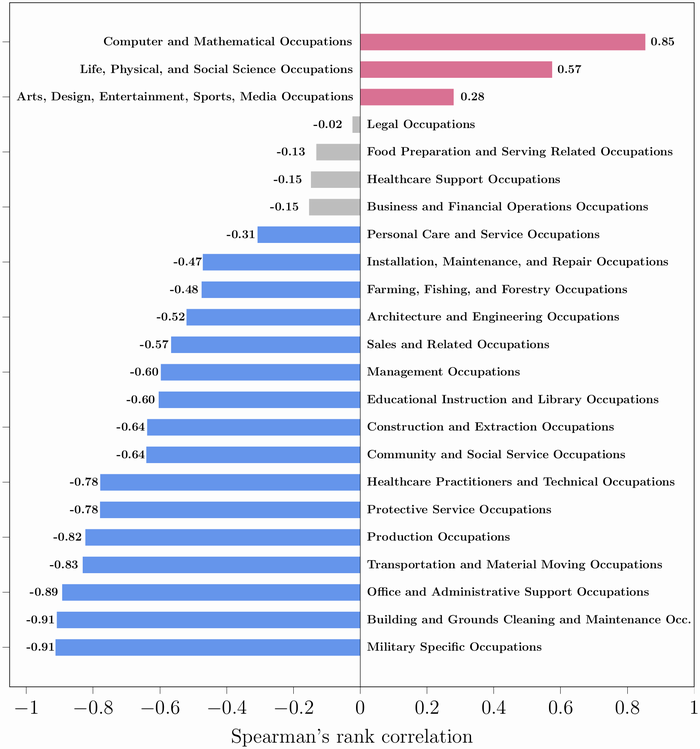Film and television shapes young minds and marketers know it. A whole generation of people will believe a show like "The Offer" is a history of "The Godfather" film the same way some believe "Food Inc" is science; because it is on a screen. Yet trends have changed as fashions have. 'Stewardess' is out of the lexicon while 'Congressman' is still in.
A new analysis finds that over time, architecture and engineering are the most positively portrayed professions while sales-related professions get the worst treatment. Even worse than politicians and other lawyers.
Their look at the OpenSubtitles dataset and mentions of 4,000 professions in subtitles across 136,000 movies and TV shows released between 1950 and 2017 found that, as expected due to an increase in college degrees after Congress made student loans unlimited in the 1980s, there was a decreased frequency of manual labor and military occupations in that time and an increase in STEM, arts, sports, and entertainment occupations.

The red-colored bars have positive correlation (increasing trend), and the blue-colored bars have negative correlation (decreasing trend). The grey-colored bars mean that the correlation is not statistically significant (α = 0.05). https://doi.org/10.1371/journal.pone.0267812.g006
Sentiment expressed toward lawyers became more negative over time, no surprise as the public has become more aware of how attorneys like Tom Girardi of "Erin Brockovich" fame manipulated environmental claims to get rich and were indicted for it.
On the positive side, architecture and engineering are the most positively portrayed professions. Musicians and therapists are also better regarded than they once were. Some previous media occupations like "doctor" have been replaced with specialized terms like cardiologist and neurologist, which mirrors real-life trends where general practitioners are now more frequently osteopaths while M.D.s go into specialized fields.





Comments